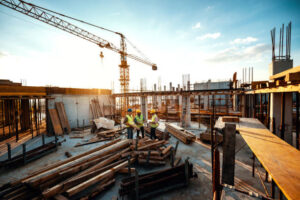Local News:
Local news refers to information and updates that are specific to a particular geographic area or community. It covers events, developments, and issues that directly impact the residents of a given locality, ranging from neighborhoods and towns to cities and regions. Local news plays a crucial role in keeping communities informed about matters that affect their daily lives, providing a platform for civic engagement, and fostering a sense of connection among residents.
- Regional Politics:
Regional politics refers to the political dynamics and governance structures specific to a particular geographic region. This level of political organization operates between the Local news and national levels, focusing on the administration and decision-making processes that impact a defined regional area. Regional politics addresses a range of issues, including Local news governance, economic development, cultural identity, and regional cooperation, playing a crucial role in shaping the policies and direction of a specific region.

- Geographic Focus: Regional politics centers on a specific geographical area that may encompass multiple cities, towns, or states within a larger national framework. The policies and decisions made at this level are tailored to the unique needs and characteristics of the region.
- Governance Structures: Regional politics involves the administration and governance of a particular region, often led by regional authorities, councils, or governments. These entities have jurisdiction over matters that directly impact the residents and businesses within the defined regional boundaries.
- Economic Development: Regional politics plays a key role in driving economic development strategies within a specific area. This includes initiatives related to infrastructure projects, job creation, attracting investments, and fostering regional industries.
- Cultural Identity: Preserving and promoting the cultural identity of a region is a significant aspect of regional politics. Policies related to cultural heritage, language, arts, and traditions are often addressed to strengthen the unique identity of the region.
- Resource Allocation: Regional governments are responsible for allocating resources, managing budgets, and making decisions about public services such as education, healthcare, and public safety within their jurisdiction.
- Interregional Relations: Regional politics involves interactions and collaborations between neighboring regions. This can include joint initiatives, agreements, and partnerships aimed at addressing shared challenges or pursuing common goals.
- Local Governance Collaboration: Regional politics often involves coordinating with Local news governments within the region. This collaboration ensures a cohesive approach to issues that span multiple localities, such as transportation, environmental conservation, and disaster preparedness.
- Political Representation: Regional politics provides a platform for political representation at the regional level. Regional representatives, such as governors or regional council members, advocate for the interests of their constituents in regional decision-making bodies.
- Regional Planning: Decision-makers in regional politics engage in strategic planning to address long-term challenges and opportunities. This includes urban planning, land use policies, and initiatives to promote sustainable development.
- Regional Challenges and Solutions: Different regions face unique challenges, whether they be related to economic disparities, environmental concerns, or demographic shifts. Regional politics involves developing and implementing solutions tailored to the specific needs of the region.
Understanding regional politics is essential for residents, policymakers, and stakeholders within a region as it directly influences the quality of life, economic opportunities, and cultural vitality of the area. It represents a critical layer of governance that bridges the Local news and national levels, addressing issues that are pertinent to the distinctive characteristics and aspirations of a particular region.
- Crime and Public Safety:
Crime and public safety constitute a crucial aspect of societal well-being, encompassing efforts to prevent, investigate, and address criminal activities while ensuring the security and well-being of the general public. The complex interplay between law enforcement, legal systems, community engagement, and preventive measures shapes the landscape of crime and public safety in any given society.

- Definition of Crime: Crime refers to acts or behaviors that are prohibited by law and are subject to legal punishment. Crimes can range from petty offenses to serious felonies, affecting individuals and communities differently.
- Law Enforcement: Police and law enforcement agencies are tasked with maintaining public order, preventing crimes, and investigating offenses. Their role includes responding to emergencies, conducting investigations, and enforcing laws to protect citizens.
- Criminal Justice System: The criminal justice system is a multifaceted structure involving law enforcement, the judiciary, and corrections. It is designed to investigate, adjudicate, and punish individuals involved in criminal activities while ensuring fair and just processes.
- Public Safety Policies: Governments and communities implement public safety policies to create environments that deter crime and ensure the protection of citizens. These policies may include community policing, surveillance systems, and crime prevention initiatives.
- Crime Prevention: Efforts to prevent crime focus on addressing root causes and creating conditions that discourage criminal activities. Community engagement, education, and social programs are examples of crime prevention strategies.
- Emergency Services: Public safety involves emergency services, including fire departments, emergency medical services, and disaster response teams. These services play a critical role in responding to accidents, natural disasters, and other emergencies.
- Legal Rights: The criminal justice system operates within a framework of legal rights for individuals accused of crimes. These rights include the presumption of innocence until proven guilty, the right to legal representation, and protection against unreasonable searches and seizures.
- Community Policing: Community-oriented policing emphasizes collaboration between law enforcement and the community. Officers work closely with residents to identify and address Local news concerns, fostering trust and cooperation.
- Crime Statistics and Analysis: Crime data and statistical analysis help policymakers and law enforcement agencies understand crime trends, allocate resources effectively, and develop targeted strategies to address specific types of criminal activities.
- Victim Support and Advocacy: Supporting victims of crime is an integral part of public safety efforts. Victim advocacy services provide assistance, counseling, and resources to those affected by criminal acts.
- Cybersecurity and Technology: In the modern era, public safety extends to the digital realm. Cybersecurity measures are essential to protect individuals and organizations from online crimes, including identity theft, fraud, and cyberattacks.
- Global Cooperation: Certain crimes, such as terrorism and cybercrime, require international collaboration. Global efforts involve sharing information, coordinating investigations, and developing strategies to address transnational threats.
Understanding and addressing crime and public safety is a collaborative effort involving government agencies, law enforcement, communities, and individuals. The goal is to create environments where citizens can live, work, and thrive with a sense of security and justice.
- Education:
Education is a systematic process of acquiring knowledge, skills, values, and attitudes that empower individuals to understand the world, develop critical thinking, and contribute meaningfully to society. It is a fundamental pillar of personal and societal development, providing a structured pathway for intellectual, social, and emotional growth. Education encompasses formal instruction, informal learning, and lifelong learning opportunities across various stages of life.

- Foundational Purpose: The primary goal of education is to foster the intellectual and personal development of individuals. It equips learners with the tools necessary for cognitive growth, effective communication, and the ability to adapt to a dynamic world.
- Formal and Informal Learning: Education occurs through both formal channels, such as schools, colleges, and universities, and informal channels, including experiences, interactions, and self-directed learning. Informal education complements formal structures and contributes to holistic development.
- Levels of Education: Education is structured into various levels, including early childhood education, primary education, secondary education, higher education, and vocational training. Each level serves specific purposes in preparing individuals for different stages of life and diverse career paths.
- Curriculum and Subjects: Educational institutions follow a curriculum that outlines the subjects and topics to be covered at each level. The curriculum is designed to provide a well-rounded education, incorporating subjects such as mathematics, science, language arts, social studies, and the arts.
- Teachers and Instructors: Educators play a crucial role in facilitating learning. Teachers and instructors guide students, create engaging learning environments, and assess progress. Their influence extends beyond imparting knowledge to shaping students’ character and values.
- Holistic Development: Education aims at holistic development, encompassing cognitive, social, emotional, and physical aspects. It nurtures creativity, critical thinking, teamwork, and other skills essential for personal fulfillment and active citizenship.
- Access to Education: Ensuring equitable access to quality education is a global challenge. Efforts are made to address barriers such as socioeconomic disparities, gender inequality, and geographical limitations to provide education opportunities for all.
- Technological Integration: Technology has transformed education, facilitating online learning, digital resources, and interactive tools. The integration of technology enhances educational experiences and prepares learners for the digital age.
- Global Perspectives: Education increasingly incorporates global perspectives, fostering an understanding of different cultures, perspectives, and global challenges. International education programs and exchanges contribute to a more interconnected and tolerant world.
- Lifelong Learning: Education is a lifelong process that extends beyond formal schooling. Lifelong learning involves acquiring new knowledge and skills throughout one’s life, adapting to changing circumstances, and staying intellectually engaged.
- Education Policy and Governance: Governments and educational institutions formulate policies to regulate and enhance education systems. Educational governance structures aim to ensure quality standards, accountability, and alignment with societal needs.
- Challenges in Education: Challenges in education include disparities in access, quality variations, financial constraints, and adapting to rapidly changing technological and societal landscapes. Addressing these challenges requires collaborative efforts from governments, communities, and stakeholders.
Education is a powerful tool for personal empowerment and societal progress. It shapes the future by preparing individuals to navigate challenges, contribute to innovation, and participate actively in the social, economic, and cultural development of their communities and the world.
- Infrastructure and Development:
Infrastructure and development are integral components of a nation’s progress, encompassing the physical and organizational structures that support economic growth, societal well-being, and improved quality of life. Infrastructure refers to the fundamental facilities and systems necessary for the functioning of a society, while development involves strategic efforts to enhance economic, social, and environmental conditions. Together, they form the backbone of sustainable progress and contribute to the overall prosperity of communities and nations.

- Definition of Infrastructure: Infrastructure comprises the essential facilities, services, and structures that facilitate economic activities and societal functioning. This includes transportation systems, energy networks, communication networks, water and sanitation facilities, and public services.
- Types of Infrastructure:
- Transportation Infrastructure: Roads, bridges, airports, ports, railways, and public transit systems that enable the movement of goods and people.
- Energy Infrastructure: Power generation, distribution networks, and renewable energy sources essential for supporting industrial, commercial, and residential activities.
- Communication Infrastructure: Telecommunication networks, internet connectivity, and information technology systems that facilitate communication and connectivity.
- Water and Sanitation Infrastructure: Systems for clean water supply, wastewater treatment, and sanitation services crucial for public health.
- Public Services Infrastructure: Educational institutions, healthcare facilities, government offices, and public spaces that contribute to social development.
- Importance of Infrastructure in Development:
- Economic Growth: Well-developed infrastructure is a catalyst for economic growth by reducing transaction costs, enhancing productivity, and attracting investments.
- Quality of Life: Infrastructure directly impacts the quality of life by providing essential services, improving accessibility, and creating conducive environments for communities.
- Job Creation: Infrastructure projects generate employment opportunities, contributing to economic development and poverty reduction.
- Connectivity and Trade: Efficient transportation and communication infrastructure foster connectivity and trade, promoting regional and global economic integration.
- Sustainable Development: Sustainable infrastructure development considers environmental impact, resilience, and resource efficiency, aligning with long-term ecological sustainability goals.
- Development Planning and Governance:
- Strategic Planning: Governments and organizations engage in strategic planning to identify priority infrastructure projects, allocate resources, and ensure sustainable development.
- Policy Frameworks: Development policies and regulatory frameworks guide infrastructure projects, ensuring adherence to safety, environmental, and social standards.
- Public-Private Partnerships (PPPs): Collaboration between the public and private sectors is common in infrastructure development, leveraging resources and expertise for project implementation.
- Challenges in Infrastructure Development:
- Financing: Adequate funding for large-scale infrastructure projects can be a challenge, requiring innovative financing models and public-private partnerships.
- Maintenance and Upkeep: The ongoing maintenance of existing infrastructure is crucial to ensure longevity and prevent deterioration.
- Environmental Impact: Infrastructure development must balance economic benefits with environmental considerations, promoting sustainable and eco-friendly practices.
- Global Infrastructure Development:
- International Cooperation: Infrastructure development often involves collaboration between nations and international organizations to address global challenges and foster sustainable development.
- Connectivity Initiatives: Global initiatives focus on enhancing connectivity through projects such as cross-border transportation networks and digital infrastructure.
- Technological Advancements:
- Smart Infrastructure: The integration of technology in infrastructure, such as smart cities and intelligent transportation systems, enhances efficiency, safety, and sustainability.
- Innovation in Construction: Advanced construction techniques and materials contribute to faster, cost-effective, and environmentally friendly infrastructure development.
Infrastructure and development are key pillars in the journey toward economic prosperity, societal well-being, and environmental sustainability. Strategic planning, effective governance, and innovative solutions are essential for addressing the evolving needs of communities and fostering resilient, inclusive, and sustainable development.












